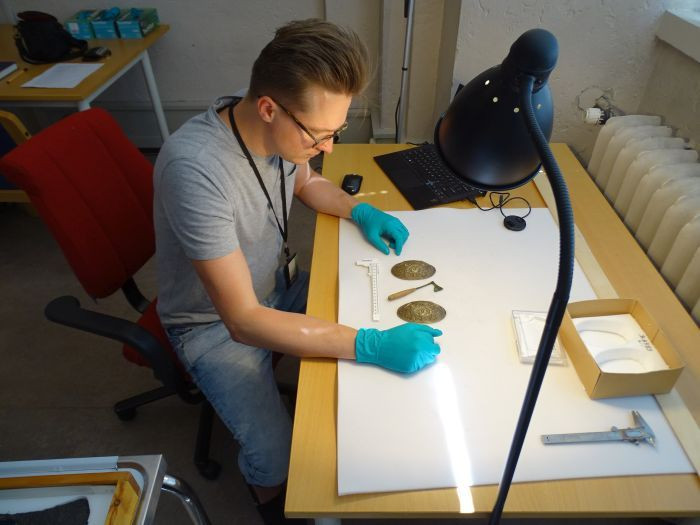Medieval Skeleton Buried In Viking Graveyard Belongs To Slavic Warrior Woman

Archaeologists who found the remains of a woman buried in a Viking graveyard in Denmark thought she could be a fighter because of an axe near the skeleton.
Researchers who conducted a closer examination of the weapon and the burial; however, now revealed that this medieval female warrior was not a Viking.
Leszek Gardeła, from the Department of Scandinavian Languages and Literatures at the University of Bonn, and colleagues found that the skeleton belonged to a Slavic woman.
The researchers said that both the form of the burial characterized by a chamber grave with an additional coffin and the presence of the weapon suggests the woman likely came from a region in Eastern Europe that is now occupied by Poland. This means the woman could be a Slav.
An arab coin from the 10th century found in the grave suggests the burial is just over a thousand years old.
Archaeologists have found evidence that some Viking women were buried with weapons, but in many cases, no human remains were found in the grave. The mysterious skeleton was still lying in the grave. The gender of the deceased was also inferred based only on the presence of jewelry and other objects often associated with women.
The purpose of the weapons in women’s graves, however, could not be precisely determined because some of these tools have deteriorated making analyses impossible. Some of those in better condition have no nicks on them. It is possibly the blades were sharpened or the weapons were made specifically for the funeral.
The axe the Slavic woman was buried with resembled tools from the southern Baltic, which includes modern countries bordering the Baltic Sea such as Germany, Lithuania and Poland.
The chambered construction of the grave also resembles the structures from that region during the Middle Ages, during which Denmark, Slavs and Scandinavians lived close together. Researchers said this could explain why the Slavic woman was laid to rest in the Danish graveyard.
Researchers said it isn’t clear how the woman died because there were no obvious injuries that could indicate this.
"Fortunately, in the case of the grave of the alleged Slavic woman, the bones have survived, but no injuries are visible that could point to the cause of death,” Gardeła said.
© Copyright IBTimes 2025. All rights reserved.





















